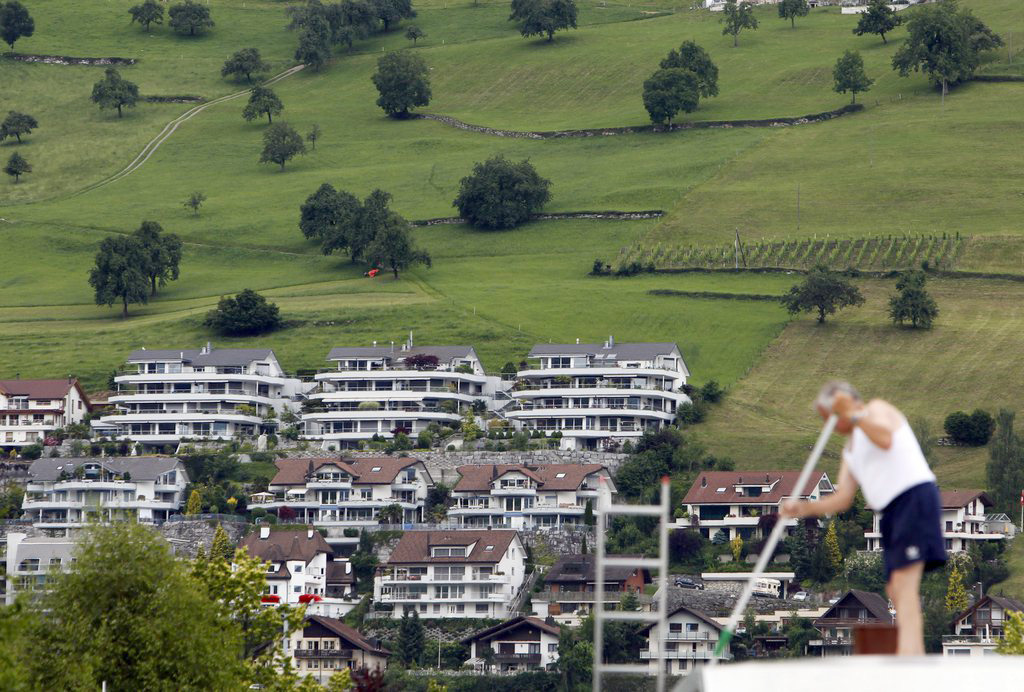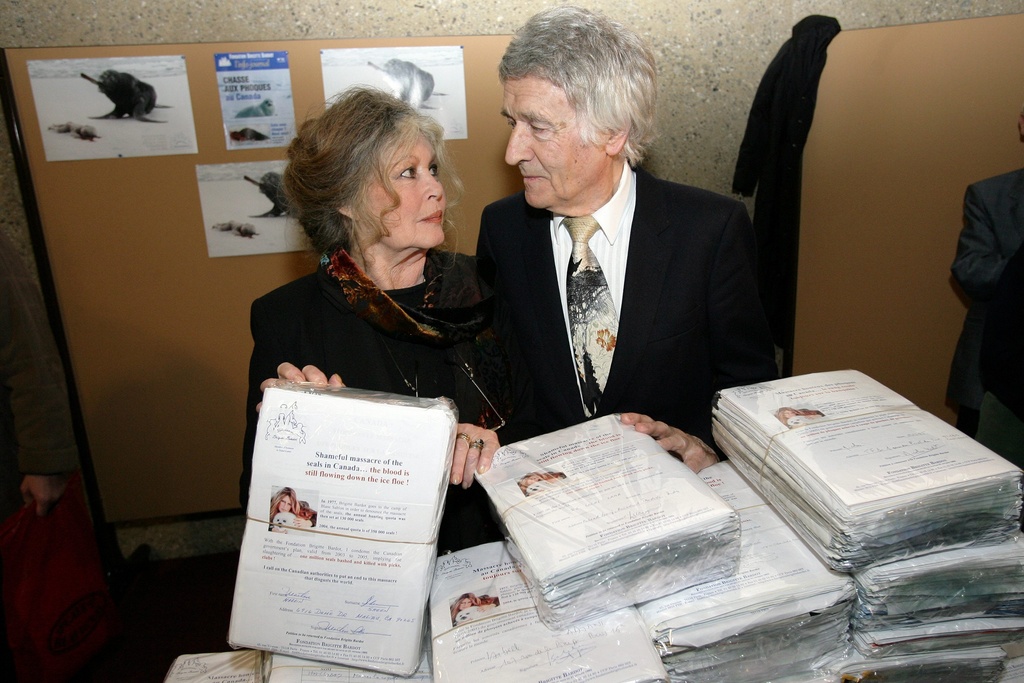Town-Country, Switzerland’s dividing line

The traditional way to slice Switzerland up has been along the Röstigraben - the linguistic fault line. But in recent national votes there has been more of a divide between town and country than between Jürgs and Julians.
Philip Freimann made headlines around Europe when he did a simple thing. A 36-year-old farmer, he decided to keep on farming. Freimann “had his health,” he told journalists.
Why would he give up his land? But Freimann’s farm happens to be in Zug, a pretty part of Switzerland that is pretty attractive to companies too. Selling his land would have netted the farmer SFr2,000 ($2,162) per square metre, or SFr30 million.
The story went far beyond Swiss television, which initially picked it up. Newspapers such as Britain’s The Guardian and Germany’s Die Zeit told of a modern day William Tell, a symbol of Switzerland’s perpetual battle to keep its rural soul in the face of creeping urbanisation. While Freimann makes for an interesting anecdote, his story also reflects something in the political climate.
The canton Bern minister Andreas Rickenbacher put it baldly in a recent speech. “The town-country divide is the biggest political conflict in Switzerland at the moment.”
Growing gap
Political analyst Claude Longchamp, head of the gfs.bern research institute, backs up the minister. “All recent studies show that this divide between urban and rural opinion is getting deeper. This is the political crisis plaguing our country, and it will only get worse in the future.”
The political analyst reckons that the divide has grown progressively over the last 25 years – and reached a peak in 2011 with the rejection of a national campaign demanding that guns be kept in public arsenals.
Other referenda that have split voters along urban-rural lines are the vote on whether to join the UN (2002), setting up a national maternal leave allowance (2002), joining the European Economic Community (1992), and the Schengen-Dublin accords on freedom of movement (2005).
“Any topic that touches on Switzerland opening up to the wider world is going to be particularly susceptible to this divide,” reckons Longchamp. “Since the 1990s, the towns, unlike the rural areas, have become pretty dependent on the global economy. But the difference in opinions is most marked when it comes to values: demographic growth has brought about huge societal change in urban areas, while rural areas have stayed close to traditional beliefs.”
Agglomerate away
This vision of a Switzerland with two distinct camps of post-modernists and traditional country folk does not convince everybody. Georg Lutz, who publishes Selects, a guide to election results, says some generalisations can be made.
“The rural areas are certainly more conservative. But the vision of a Switzerland peppered with tiny villages where the inhabitants are mostly farmers is outdated. Between Geneva and Lake Constance, the whole of Switzerland is one big agglomeration.”
According to the Federal Statistics Office, nearly 40 per cent of Swiss residents live neither in a rural area nor in an urban one, but precisely in an agglomeration, zones bordering on urban areas with mostly detached houses.
“These are middle class people who are able to buy themselves a house and yet who want to be closer to nature,” says Georg Lutz. “But when they vote, they tend to vote conservatively. It’s in agglomerations like these that the [rightwing] Swiss People’s Party has attracted most members.”
But historian and journalist Joëlle Kuntz thinks that rumours of a divide between urbanites and country folk are exaggerated. “They have both merged in a way that has melted their differences,” she reckons. “Country folk, mountain dwellers and city lovers all watch the same television programmes, they go to the same shops, attend the same schools and go on holiday to India or Bali. They have the same social aspirations.”
Diverging interests
Where there is division inside Switzerland, it comes from diverging points of view – be they agricultural, energy, property or finance issues – adds Kuntz.
Lutz, meanwhile, feels the impression of a town-country conflict has become stronger in recent years. Why? Because of these diverging points of view on many issues, but also because of attempts by towns and cities to affirm their importance at a political level.
What that means is that cities are constantly pushing for favourable means to split the financing of state institutions and the financing of infrastructure. These demands worry agglomerations – although their political clout remains intact, with peripheral zones of cities still overrepresented in national politics.
“Up until the 1990s, the rural areas were Switzerland,” says Longchamp, “The national identity was built around them, and the national interest was defined by them. Nowadays the rebalancing of politics scares rural areas. They’re scared that cities will swallow them up, and the budget too.”
What happened to the Röstigraben, the imaginary line separating French- and German-speaking Switzerland? Ever since the vote on joining the EEC in 1992, political analysts have found it a useful way to explain different vote results. “It has faded away a bit over the last few years,” says Claude Longchamp, “but it hasn’t completely disappeared. This dividing line comes into sharp focus whenever there are votes on the welfare state, for example the law on tightening unemployment benefits.”
Georg Lutz sees it differently.If the linguistic barrier is less remarkable than ever, it doesn’t necessarily mean it’s melted away. “This is a consequence of the Swiss People’s Party’s recent success over the last 10 years. When 20% of French-speaking Swiss started voting for the rightwing party, we could no longer talk about “the Romand exception.”
According to the Federal Statistics Office, the continued growth of large agglomerations has given birth to 5 conurbations in Switzerland: Zurich, Basel, Geneva-Lausanne, Bern and Italian-speaking Switzerland.
The BAK think tank in Basel presented a report on urban areas to coincide with the 115th anniversary of the Swiss Union of Cities. 74% of Swiss residents live in urban areas, and those areas count for 84% of the Swiss GDP.
Cities and towns may be gaining in demographic importance and wealth, but this is not true at a political level. In the Senate, each canton has 2 seats, irrespective of population. During national ballots, for which a double majority (of voters and of cantons) is needed, a vote from canton Uri in the middle of the 19th century had the same weight as 17 votes from canton Zurich. Today a vote from Uri is worth twice as much.

In compliance with the JTI standards
More: SWI swissinfo.ch certified by the Journalism Trust Initiative














You can find an overview of ongoing debates with our journalists here . Please join us!
If you want to start a conversation about a topic raised in this article or want to report factual errors, email us at english@swissinfo.ch.